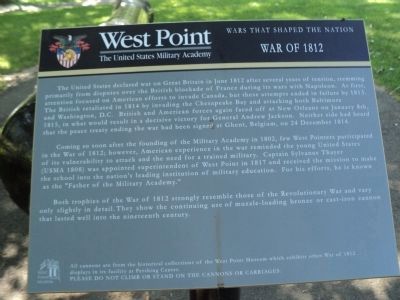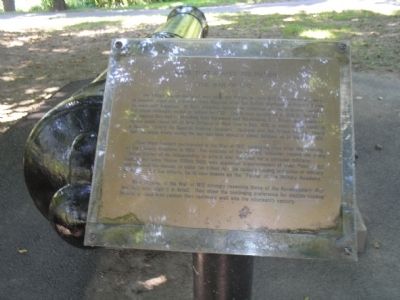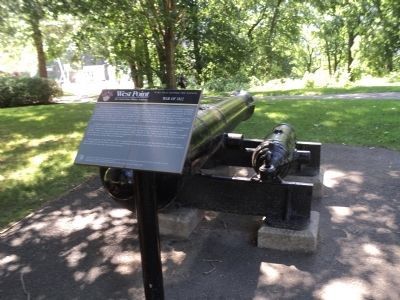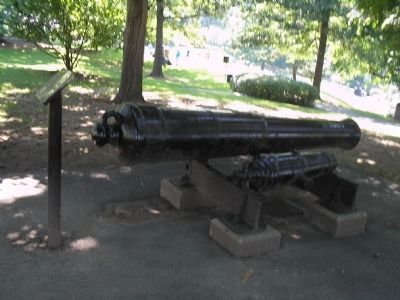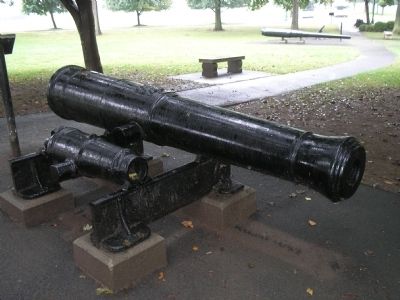West Point in Orange County, New York — The American Northeast (Mid-Atlantic)
Wars That Shaped the Nation
The War of 1812
Inscription.
The United States declared war on Great Britain in June 1812 after several years of tension stemming primarily from disputes over the British blockade of France during its wars with Napoleon. At first, attention focused on American efforts to invade Canada but those attempts ended in failure by 1813. The British retaliated in 1814 by invading Chesapeake Bay and by attacking Baltimore and Washington, D.C. British and American forces again faced off at New Orleans on New Year’s Day, 1815, in what would result in a decisive victory for General Andrew Jackson. Jackson and the British had not heard that the peace treaty ending the war has been signed at Ghent, Belgium on 24 December 1814.
Few West Pointers participated in the War of 1812, coming so soon after the founding of the Military Academy in 1802. The outcome of the war did, however, remind the young United States of its vulnerability to attack and the need for a stronger military. Colonel Sylvanus Thayer (USMA 1808) was appointed Superintendant of West Point in 1817 and received the mission to make the school into the nation’s leading institution of military education. For his efforts, he is now known as the “Father of the Military Academy.”
Both trophies of the War of 1812 strongly resemble those of the Revolutionary War and vary only slightly in detail. They show the continuing preference for muzzle-loading bronze or cast-iron cannon that continued well into the nineteenth century.
Topics. This historical marker is listed in this topic list: War of 1812. A significant historical month for this entry is June 1812.
Location. 41° 23.735′ N, 73° 57.352′ W. Marker is in West Point, New York, in Orange County. Marker is on Cullum Road, on the right when traveling west. Marker is located at Trophy Point at the U.S. Military Academy. Touch for map. Marker is in this post office area: West Point NY 10996, United States of America. Touch for directions.
Other nearby markers. At least 8 other markers are within walking distance of this marker. A different marker also named Wars That Shaped the Nation (a few steps from this marker); Our National Heritage (within shouting distance of this marker); West Point in the American Revolution (within shouting distance of this marker); Constitution Island (within shouting distance of this marker); Sherburne’s Redoubt (within shouting distance of this marker); In Memoriam (within shouting distance of this marker); Fred E. McAniff & John R. Parker (within shouting distance of this marker); The Great Chain (within shouting distance of this marker). Touch for a list and map of all markers in West Point.
Related markers. Click here for a list of markers that are related to this marker. Tour the “Wars that shaped the Nation” markers found at Trophy Point at the U.S. Military Academy.
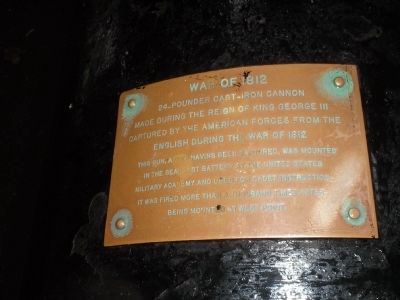
Photographed By Bill Coughlin, September 27, 2009
6. Plaque of Cannon
24-pounder cast-iron cannon made during the reign of King George III captured by the American forces from the English during the War of 1812.
This gun, after having been captured, was mounted in the seacoast battery at the United States Military Academy and used for cadet instruction. It was fired more than a thousand times after being mounted at West Point.
This gun, after having been captured, was mounted in the seacoast battery at the United States Military Academy and used for cadet instruction. It was fired more than a thousand times after being mounted at West Point.
Credits. This page was last revised on June 16, 2016. It was originally submitted on September 7, 2009, by Bill Coughlin of Woodland Park, New Jersey. This page has been viewed 836 times since then and 25 times this year. Photos: 1. submitted on July 12, 2014, by Bill Coughlin of Woodland Park, New Jersey. 2. submitted on September 7, 2009, by Bill Coughlin of Woodland Park, New Jersey. 3. submitted on July 12, 2014, by Bill Coughlin of Woodland Park, New Jersey. 4, 5. submitted on September 7, 2009, by Bill Coughlin of Woodland Park, New Jersey. 6. submitted on September 27, 2009, by Bill Coughlin of Woodland Park, New Jersey.
